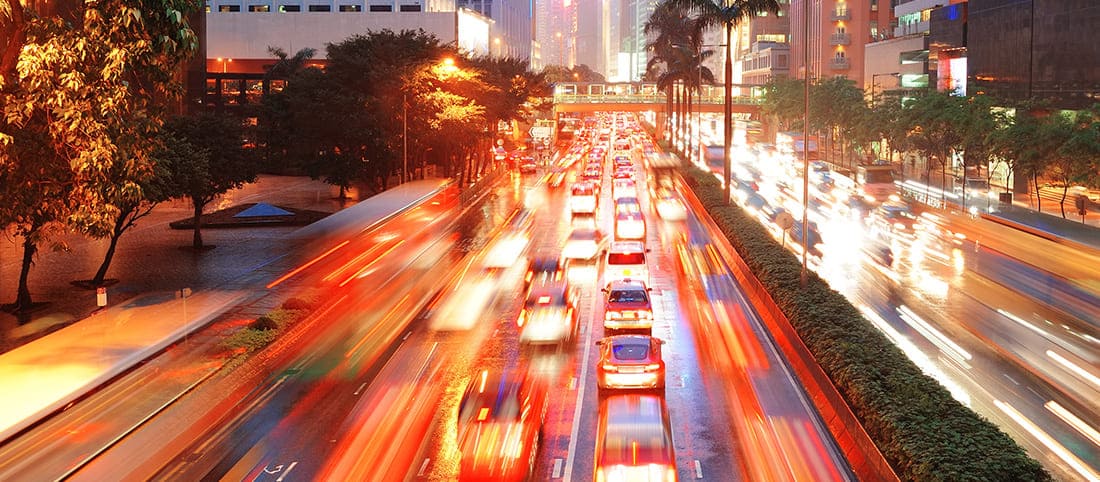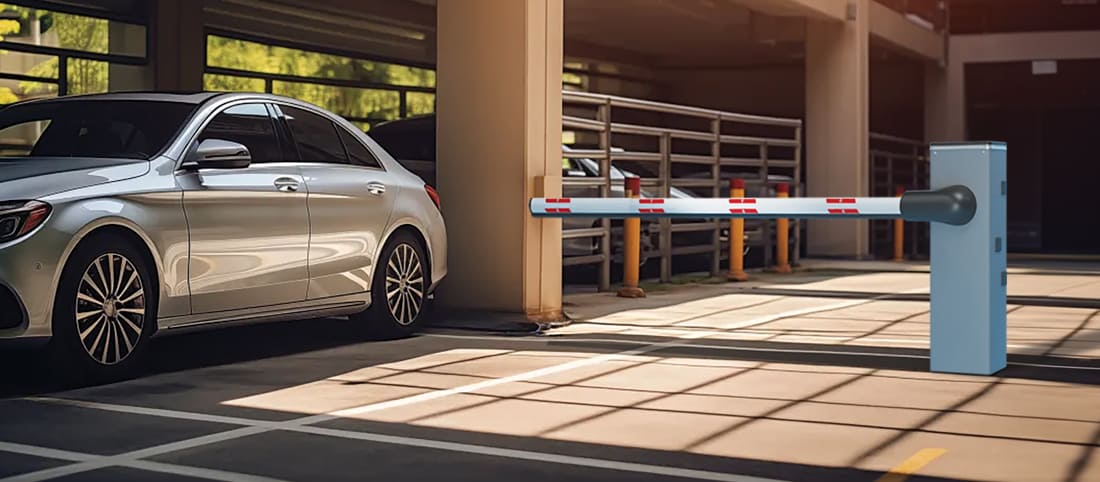How Smart Cities Use Data to Improve Urban Traffic Management

In the era of smart cities, data plays a crucial role in ensuring the smooth flow of urban traffic and efficient parking management. By harnessing the power of IoT devices, cameras, and sensors, cities can effectively tackle congestion and enhance transportation systems. This blog explores the numerous advantages of data-driven traffic management, including cost savings, improved public transportation, enhanced safety, and increased economic productivity. Discover how these remarkable technological advancements are addressing the pressing urban challenges of our time and laying the foundation for more efficient urban mobility.
Table of contents:
Why is data-driven traffic management so important?
Did you know that traffic congestion cost EU economies a staggering €270 billion in 2019.? This figure, reported by the European Court of Auditors, is just the tip of the iceberg. Congestion leads to longer commute times, greater accident risks, and a reduced quality of life. Data-driven traffic management systems enable cities to make informed decisions that optimize urban traffic by analyzing records from IoT devices, smart cameras, and sensors. Read on to learn ten reasons why data-driven solutions are vital for smart cities, not only to enhance efficiency, safety, and sustainability but also to drive substantial economic benefits.
Better Urban Planning
Urban planners rely heavily on insights from traffic patterns and trends, which are effectively analyzed through data analytics. This analysis guides decisions on where to build new roads, what to improve in public transportation, and how best to control urban development. Such fact-driven planning ensures that city infrastructure keeps pace with population growth and evolving mobility needs.
Cost Savings
By optimizing the use of existing roadways, effective urban traffic management systems reduce the need for infrastructure investments. This efficient utilization leads to decreased travel time and lower transportation expenses, as data-driven traffic control ensures smoother and more predictable journeys. Consequently, smart cities can focus on strategic development rather than continuous road expansion, preserving green spaces, and increasing the quality of life in metropolitan areas.

Efficient Parking Management
Data-driven smart parking systems efficiently guide drivers to available spots, minimizing search times. These systems use detection cameras, sensors, and IoT devices to monitor real-time occupancy and direct drivers accordingly, easing street congestion and reducing driver frustration. By optimizing parking management, smart cities can make better use of existing infrastructure and potentially avoid building new facilities. Additionally, smart parking systems can implement dynamic pricing models to maximize the utilization of available spaces. To discover more ways to ease urban parking challenges, read this detailed guide.
Smoother Traffic
Through the use of real-time data analysis, smart cities enhance traffic flow, effectively minimizing congestion and shortening commute times. Adaptive traffic signals adjust their light cycles based on real-time vehicle circulation. Sensors and cameras provide records on traffic density, allowing these signals to extend green lights or shorten red lights accordingly. This dynamic adjustment leads to smoother vehicular movement through intersections, reducing idling and fuel consumption, thereby improving overall efficiency.
Reliable Public Transportation
Smart cities utilize data analysis to improve the scheduling and routing of public transportation networks, ensuring buses and trains are highly reliable and punctual. By making real-time adjustments to traffic conditions and passenger demand, we can vividly demonstrate the power of cutting-edge technology. The effectiveness of these systems significantly boosts public transit utilization, leading to more efficient, connected, and sustainable urban mobility.

Improved Safety
Analyzing urban traffic data helps to identify high-risk areas and times when accidents occur more frequently. This valuable information enables municipalities to implement targeted safety interventions, including improving signage, redesigning intersections for better visibility and traffic flow, and increasing law enforcement presence in critical areas. By adopting these data-driven strategies, smart cities can greatly decrease the occurrence of accidents, resulting in safer roads for drivers and pedestrians alike. In addition, this proactive approach helps alleviate the pressure on emergency services, enabling them to better allocate resources and respond promptly to incidents.
Optimized Emergency Routes
Emergency services rely on accurate traffic data to identify the quickest routes, reduce response times, and efficiently manage incidents to save lives. Swift traffic navigation improves emergency response capabilities and strengthens city capacity to handle crises effectively. Furthermore, the use of past urban traffic patterns can help in planning optimal emergency routes for different times of the day, ensuring that response teams are able to respond swiftly, even during peak hours.

Real-Time Alerts and Updates
Providing commuters with real-time traffic updates and alerts about incidents or delays enhances urban mobility by enabling them to choose the best routes. These updates can be sent through various channels, such as mobile apps, GPS systems, and digital road signs, enabling drivers to avoid congested routes and save time. The continuous flow of information helps to create a more responsive and adaptive traffic system, resulting in a smoother and more pleasant commuting experience.
Tourism and Visitor Experience
Efficient, data-driven vehicle circulation management enhances the experience for tourists and visitors. Real-time urban traffic information, optimized routes, and efficient parking solutions make it easier for visitors to navigate the city, access attractions, and enjoy their stay. Additionally, integrated navigation systems can suggest the best times to visit popular sites, helping to spread out visitor vehicular movement and reduce overcrowding. By ensuring smoother travel and easier access to key locations, smart cities can enhance their appeal as tourist destinations and stimulate economic growth.

Environmental Benefits
Optimized traffic management reduces vehicle emissions and improves air quality. By minimizing idle times and enhancing traffic flow, fewer pollutants are released into the atmosphere. The overall effect is a cleaner, greener city. This reduction in emissions also supports broader climate change initiatives, aligning urban policies with global sustainability goals.
Innovating Urban Mobility for a Better Tomorrow
The future of urban mobility lies in the intelligent application of data to manage and improve urban traffic. By leveraging information from IoT devices and sensors, smart cities can evolve to meet the demands of growing populations while ensuring that mobility is seamless, efficient, and sustainable. The potential benefits are extensive: from decreased travel times and expenses to improved public safety, effective parking management, and a more sustainable environment. Through the implementation of data-driven solutions, we are not only tackling present urban challenges, but also establishing a strong basis for smart cities to adapt and flourish, making urban living more sustainable and enjoyable.

